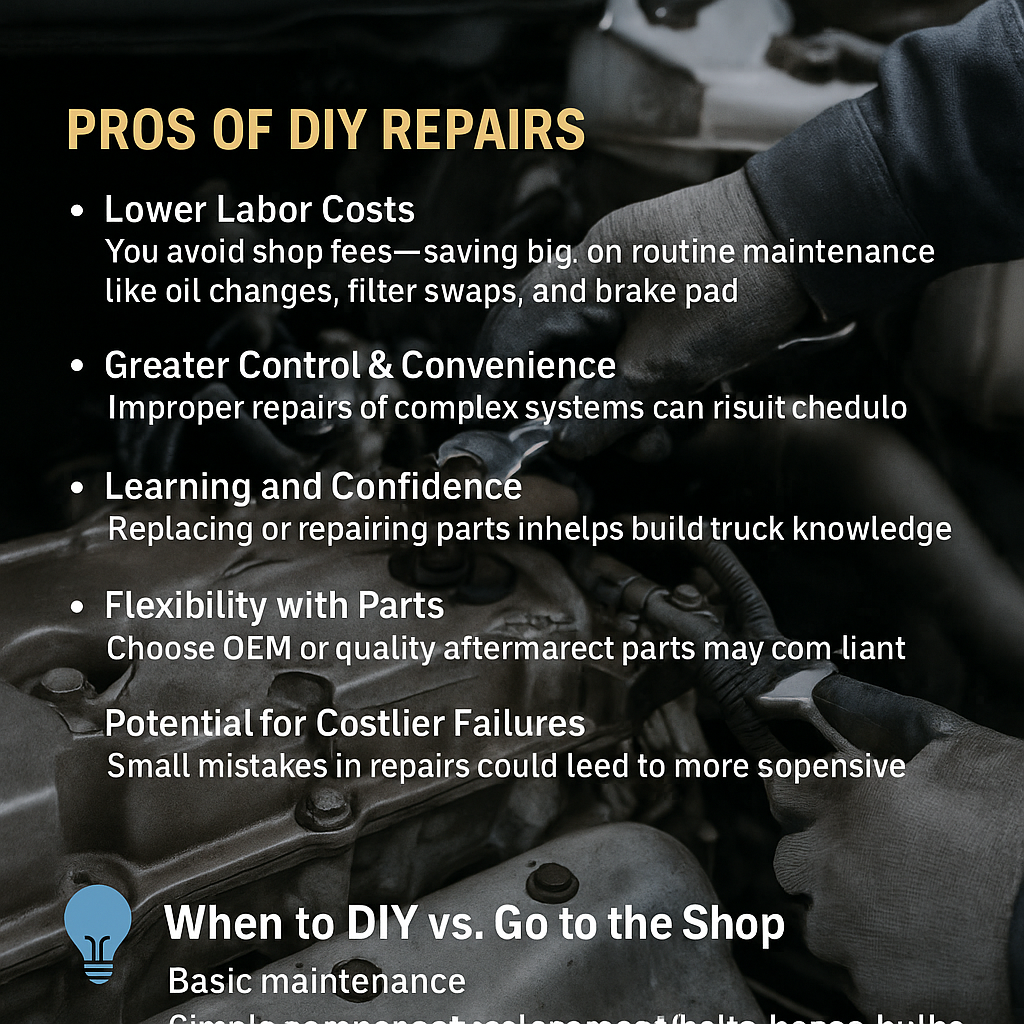
DIY Semi‑Truck Repairs: Pros, Cons & When to Leave It to the Pros
Share
Working on your own semi can save money and build skills—but it also carries risks. Here’s a balanced look to help you decide when DIY is worth it (and when it’s not).
Pros of DIY Repairs
-
Lower Labor Costs
You avoid shop fees—saving big on routine maintenance like oil changes, filter swaps, and brake pad replacements. -
Greater Control & Convenience
You decide the timing, parts, and pace—no waiting for shop appointments. Quick fixes can be completed immediately . -
Learning and Confidence
Replacing or repairing parts yourself builds truck knowledge that helps you spot future issues earlier. -
Flexibility with Parts
You can choose OEM or quality aftermarket parts and shop around for the best deals.
Cons & Risks of DIY Repairs
-
Missing the Root Cause
You might fix a symptom without discovering the underlying issue—leading to repeat breakdowns. -
Quality & Safety Risks
Complex systems like turbochargers, transmissions, or wiring may be improperly repaired, causing safety hazards or component damage. -
Regulatory Compliance Issues
Repairs that affect emissions systems or safety features could violate regulations if not done correctly or documented . -
Potential for Costlier Failures
A small mistake—wrong torque value, disconnected sensor—can cause major issues that cost far more to fix later .
💡 When to DIY vs. Go to the Shop
DIY makes sense for:
-
Basic maintenance (oil, filters, brakes)
-
Simple component replacement (belts, hoses, bulbs)
-
Basic diagnostics with your diesel laptop
Seek a pro for:
-
Aftertreatment systems (DPF, SCR, DEF)
-
Transmission or chassis diagnostics
-
Complex electrical issues
-
Sensor or turbo failures
Tools & Best Practices
-
Use a diesel laptop to properly diagnose issues—don’t guess-and-fix.
-
Replace parts as per OEM torque specs; never cut corners.
-
Always inspect wiring, connectors, and safety-critical systems.
-
Document all repairs, especially those related to emissions systems.
Final Takeaway
DIY is a smart, cost-effective option for simple maintenance—especially when paired with proper diagnostic tools. But for complex systems or high-stakes repairs, professional expertise is worth the investment. Use your diesel laptop to guide decisions and know when it’s time to visit the shop.
